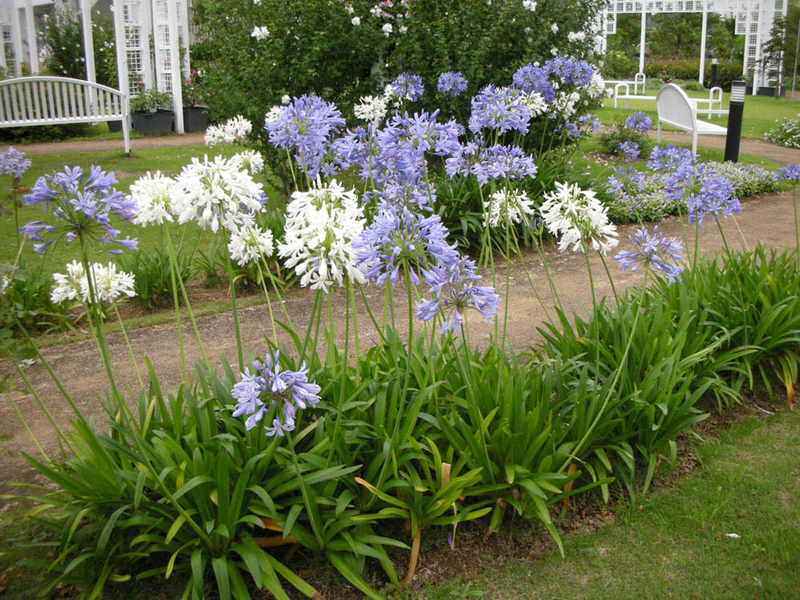Unleashing the Secret to Successful Agapanthus Growing: Idea for a Flourishing Garden
In the world of gardening, cultivating agapanthus successfully calls for a strategic approach that incorporates different aspects of plant care. With mindful interest to detail, one can open the tricks to nurturing these sensational blossoms, resulting in a yard that thrives with charm and vibrancy. By recognizing the subtleties of agapanthus farming, one can create a setting where these plants prosper and bloom abundantly. In the following conversation, we will certainly discover important tips and methods that will certainly direct you in the direction of a flourishing agapanthus yard, providing insights right into finest techniques, dirt problems, watering strategies, and much more.
Growing Agapanthus: Finest Practices
When growing Agapanthus, proper dirt prep work is necessary for ensuring successful development and advancement of these stunning blossoms. Agapanthus, generally called Lily of the Nile or African lily, thrives in well-draining soil with a slightly acidic to neutral pH level - Agapanthus. Prior to growing, it is vital to change heavy clay soils with raw material such as garden compost or peat moss to boost drainage and offer essential nutrients for the plants
To plant Agapanthus, pick an area that receives complete sunshine to partial shade, as this will promote healthy development and abundant blooming. Dig an opening twice the diameter of the plant's origin ball and place the Agapanthus at the same depth it was formerly growing. Gently backfill the hole with soil, weighing down strongly to get rid of any type of air pockets around the origins.
Water the newly grown Agapanthus thoroughly and remain to maintain the soil equally moist, specifically during the plant's energetic expanding period. Agapanthus. Applying a well balanced fertilizer once a month can better sustain the plant's development and blooming. By adhering to these ideal techniques for planting Agapanthus, you can create a magnificent display screen of these exciting blossoms in your yard
Suitable Soil Conditions for Agapanthus
For optimum growth and flowering success of Agapanthus plants, making certain the dirt conditions are optimal is essential. Agapanthus chooses dirt that is abundant in nutrients, so incorporating a well balanced plant food throughout the growing period can promote healthy growth and vibrant blossoms.

Watering and Fertilizing Tips
To make certain healthy and balanced development and lively blooms, appropriate watering and fertilizing methods are essential for effective Agapanthus cultivation. Agapanthus plants benefit from normal watering, especially throughout the expanding period.
When it pertains to fertilizing Agapanthus, a balanced plant food with equal components nitrogen, phosphorus, and potassium can be applied in the springtime to promote healthy and balanced growth and flowering. Slow-release fertilizers are perfect for offering nutrients progressively over an extensive period. Prevent over-fertilizing, as this can bring about too much foliage growth at the expense of flowers.
Furthermore, incorporating raw material like garden compost into the soil can enhance nutrient levels and enhance dirt framework, helping in the overall wellness of the Agapanthus plants. By following these watering and feeding suggestions, garden enthusiasts can guarantee their Agapanthus plants flourish and produce magnificent displays of flowers.
Trimming and Deadheading Techniques
Proper pruning and deadheading techniques play a critical function in maintaining the wellness and appearances of Agapanthus plants, enhancing the important practices of watering and feeding for effective cultivation. Pruning Agapanthus entails getting rid of invested flower heads, yellowing or dead leaves, and general shaping of the plant to promote much better development. Deadheading, the procedure of getting rid of discolored blossoms, not only improves the plant's look yet also motivates further growing.
When deadheading Agapanthus, it is a good idea to trim off the blossom stem at the base utilizing sharp, clean shears. This procedure reroutes the plant's energy from seed production back right into root and vegetation growth, promoting a healthier and more durable plant. Normal deadheading can extend the blooming duration of Agapanthus and protect against self-seeding, which can cause congestion.
In terms of trimming, Agapanthus normally take advantage of a light trim after blooming to best site tidy up the plant and urge fresh growth. Cutting back the invested flower stems and eliminating any kind of dead or damaged vegetation helps preserve the plant's vigor and general appearance. However, it is vital to prevent reducing into the crown of the plant, as this can compromise its health.

Protecting Agapanthus From Pests and Diseases
Implementing efficient pest why not try this out and disease management techniques is vital to safeguarding the health and wellness and vigor of Agapanthus plants in cultivation. One common pest that impacts Agapanthus is the Agapanthus borer, a caterpillar that passages right into the plant, creating damages to the leaves and blossoms.
In enhancement to bugs, Agapanthus are vulnerable to illness such as origin rot and fungal leaf areas. By staying alert and attending to insect and condition issues immediately, garden enthusiasts can assist their Agapanthus flourish and flourish.

Conclusion
In final thought, effective farming of agapanthus needs appropriate planting techniques, suitable soil conditions, adequate watering and feeding, normal pruning and deadheading, and security from pests and conditions. By complying with these ideas and techniques, gardeners can make certain a growing garden loaded with gorgeous agapanthus flowers. Agapanthus. Remember to keep consistent care and attention to detail to advertise the wellness and long life of these spectacular plants
When growing Agapanthus, proper dirt prep work is vital for making sure effective growth and advancement of these gorgeous flowers.Water the freshly grown Agapanthus thoroughly and proceed to keep the dirt equally damp, particularly throughout the plant's energetic growing period.For optimal growth and blooming success of Agapanthus plants, making sure the dirt conditions are ideal is vital. When hair transplanting or planting Agapanthus, Clicking Here guarantee the dirt is well-prepared to offer the required foundation for the plants to develop themselves effectively. One common insect that affects Agapanthus is the Agapanthus borer, a caterpillar that tunnels right into the plant, triggering damages to the fallen leaves and blossoms.